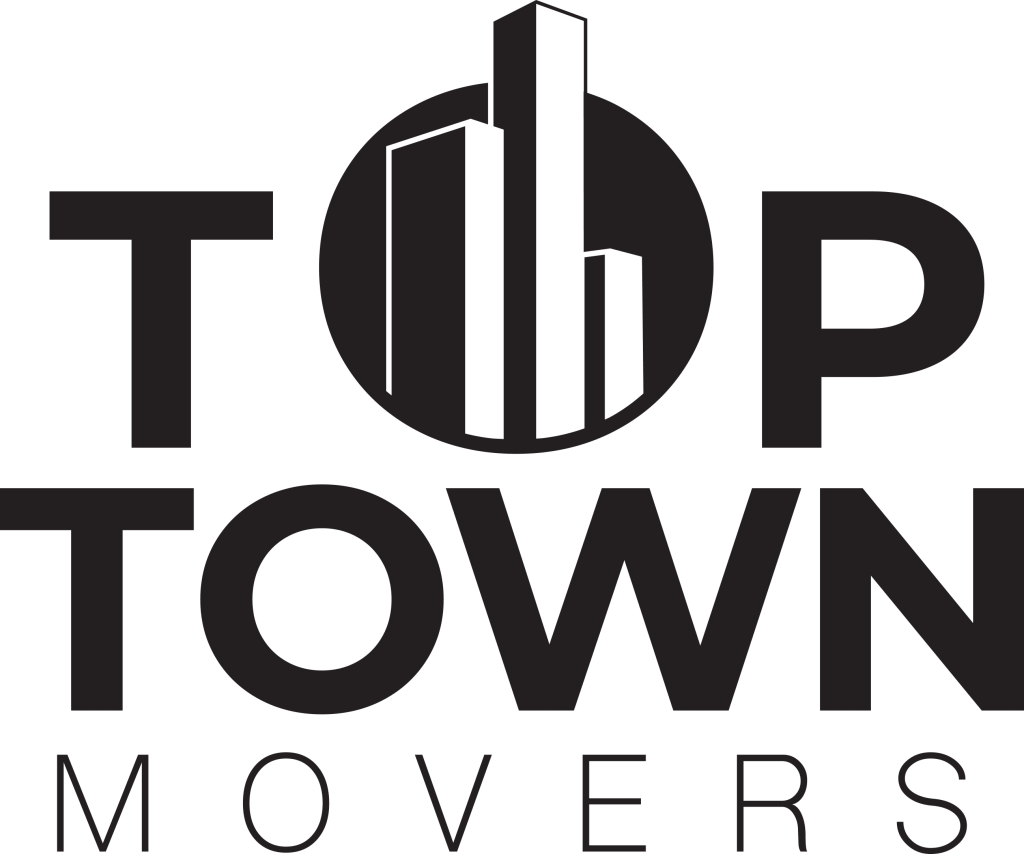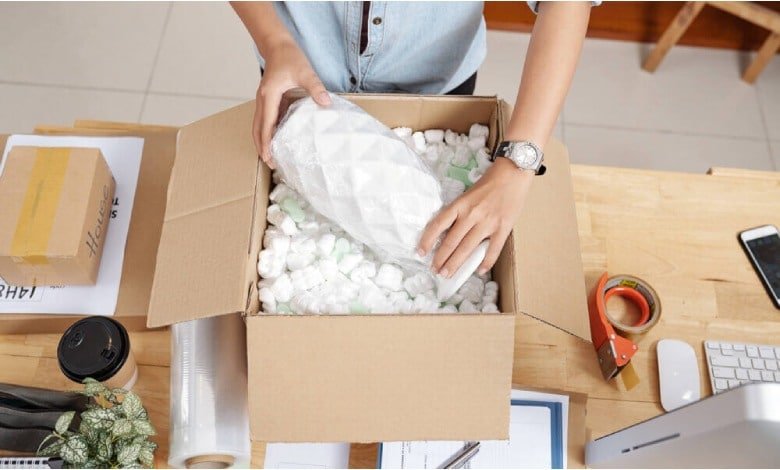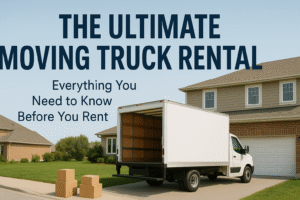The journey to a new home is a path paved with decisions, anticipation, and, invariably, a lot of cardboard boxes. Whether you’re moving from a condo in North York to a house across Ontario or embarking on a simpler local relocation, the process of packing up your life is a significant undertaking. The difference between a chaotic, stressful move and a smooth, organized transition often comes down to one crucial element: preparation. At the heart of that preparation lies having the right tools for the job. A well-thought-out moving supplies checklist is not just a shopping list; it’s the blueprint for a successful pack, the key to protecting your cherished belongings, and your best defense against last-minute panic.
At Top Town Movers, we’ve seen it all. We’ve helped countless individuals and families navigate the complexities of moving, and we know that underestimating the importance of proper packing materials is a common pitfall. Using flimsy grocery store boxes, running out of tape midway through a packing session, or realizing you have no way to protect your grandmother’s antique mirror can turn an exciting new chapter into a frustrating ordeal.
- Learn More >>>>Does moving affect credit score?
The Foundation: Essential Boxes and Containers
The box is the cornerstone of any move. However, not all boxes are created equal. Investing in proper moving boxes is an investment in the safety of your possessions. They are designed for stacking, uniform in size for easy loading, and built to withstand the weight of household goods.
Small Boxes (1.5 cubic feet)
Often called “book boxes,” these are the unsung heroes of the packing world. Their small size is by design. They are intended for heavy, dense items. Packing heavy things in large boxes makes them nearly impossible to lift safely and increases the risk of the box breaking open from the bottom.
- Use for: Books, records, canned goods, tools, small heavy appliances (like a blender or toaster), and collections of CDs or DVDs.
Medium Boxes (3.0 cubic feet)
This is your all-purpose, workhorse box. It’s the most versatile size and you will likely need more of these than any other. They are large enough to be useful for a wide range of items but not so large that they become too heavy when filled.
- Use for: Kitchen items like pots and pans, small appliances, electronics, toys, and clothing that isn’t being hung.
Large Boxes (4.5 – 6.0 cubic feet)
The golden rule for large boxes is to fill them with items that are large but light. Filling a large box with heavy items is a recipe for disaster—for the box, its contents, and the back of the person trying to lift it.
- Use for: Linens, towels, bedding, pillows, lampshades, large stuffed animals, and bulky winter coats.
Wardrobe Boxes
These tall boxes come equipped with a metal bar for hanging clothes. They are an incredible time-saver for both packing and unpacking. You can move clothes directly from your closet to the box and then from the box to your new closet, minimizing wrinkles and eliminating the need to re-wash everything. They are also great for tall, awkward items like floor lamps or bundles of drapes.

Dish Packs (Barrel Boxes)
If you are packing your own kitchen, a few dish packs are worth their weight in gold. These boxes are constructed with extra-thick, double-walled cardboard for superior protection. They are specifically designed for fragile kitchen items. When used with cellular dividers or ample packing paper, they create a safe and secure environment for your plates, glasses, and stemware.
Picture and Mirror Boxes
These specialized, often telescoping boxes are designed to protect your fragile, flat items. They can be adjusted to fit various sizes of artwork, mirrors, and flat-screen televisions. Never move these items without a dedicated picture box; a simple moving blanket is not enough to protect them from punctures or corner damage inside a moving truck.
The Armor: Cushioning and Protection
Boxes provide the structure, but cushioning materials provide the essential protection. This part of your moving supplies checklist ensures your belongings arrive in the same condition they left in.
Packing Paper (Unprinted Newsprint)
This is your primary tool for wrapping and protecting everyday items. It’s inexpensive, versatile, and clean. Use it to wrap individual glasses and plates, to ball up and fill empty spaces in boxes (which prevents items from shifting), and to provide a soft layer at the bottom and top of each box. Avoid using actual newspaper, as the ink can easily transfer onto your belongings, creating a cleaning nightmare.
Bubble Wrap
For your most fragile possessions, bubble wrap provides superior cushioning against bumps and shocks. It’s ideal for electronics, delicate glassware, vases, figurines, and picture frames. A common mistake is to place the bubble side out; for maximum protection, the bubbles should be facing inward, against the item you are protecting.
Moving Blankets and Furniture Pads
These thick, heavy-duty blankets are non-negotiable for protecting furniture. They shield wood from scratches, prevent upholstery from tearing, and protect corners from dings and dents. While professional moving companies like Top Town Movers will come equipped with these, if you are undertaking any part of the move yourself, you should rent or purchase them.
- Learn More >>>>Moving Timeline Checklist
Stretch Wrap
Often used in conjunction with moving blankets, plastic stretch wrap is a large roll of cling film used to secure pads to furniture. It’s also excellent for keeping drawers on a dresser closed, bundling items like curtain rods or ski poles together, and protecting upholstered furniture from dirt and moisture.
The Connectors: Tapes and Adhesives
Without good tape, even the best box is just a cardboard container waiting to spill its contents.
Packing Tape
This is not the same as Scotch tape or duct tape. You need proper plastic packing tape, which is strong, durable, and has a powerful adhesive designed to stick to cardboard. Invest in a quality brand. You will need at least one roll of tape for every 10-15 boxes. It’s always better to have too much than to run out.
Tape Dispenser
A handheld tape dispenser or “tape gun” might seem like a luxury, but after you’ve assembled your twentieth box, you’ll see it as an essential tool. It makes the process of sealing boxes faster, easier, and much less frustrating than trying to find the end of the tape roll over and over again.
The Organizers: Labeling and Inventory
A well-labeled move is a well-organized move. This simple step is one of the most impactful things you can do to reduce stress when you arrive at your new home.
Permanent Markers
Have a handful of high-quality permanent markers on hand. Black is fine, but using a color-coded system can be even more effective. For example, use blue for the kitchen, red for the master bedroom, green for the living room, and so on.
Labels
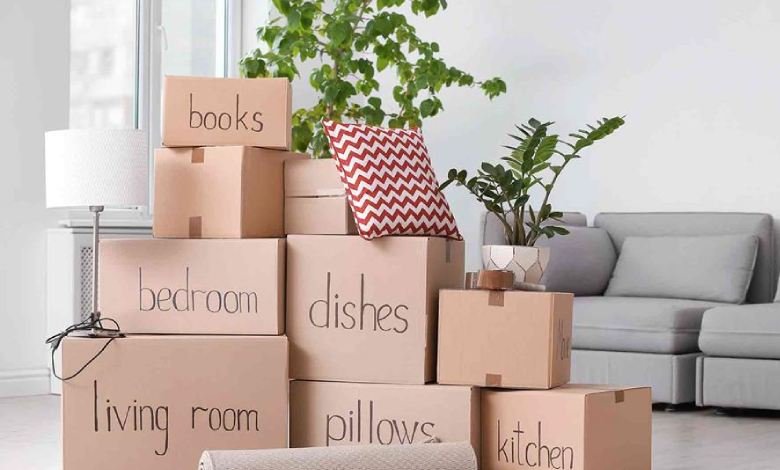
You can buy pre-printed moving labels that list rooms, or you can use simple blank labels. The key is to be consistent. On every box, you should clearly write three things:
- The destination room in the new house.
- A brief, general description of the contents (e.g., “Kitchen – Everyday Glasses” or “Office – Desk Supplies”).
- “FRAGILE” in large letters on any box containing breakable items.
Label the top and at least two sides of each box. This ensures you can identify the box’s contents and destination even when it’s stacked.
The Tools: Disassembly and Moving Day Equipment
This section of your packing essentials inventory covers the items that help with the physical work of moving.
Basic Tool Kit
Most moves involve some level of furniture disassembly. Have a basic toolkit ready with a Phillips and flathead screwdriver, a set of Allen keys (hex wrenches), an adjustable wrench, and pliers. You’ll need these for taking apart bed frames, removing table legs, and disconnecting appliances.
- Learn More >>>>How To Move To a New Town
Ziploc Bags
These are indispensable for keeping small hardware organized. When you take apart a piece of furniture, put all the screws, bolts, and washers into a small Ziploc bag. Label the bag clearly and then use packing tape to securely attach it to the largest piece of that furniture. This will save you hours of searching for that one specific screw when it’s time to reassemble.
Box Cutter or Utility Knife
A sharp utility knife is crucial for breaking down boxes for recycling once you’re unpacked, cutting packing tape, and trimming packing materials to size. Always handle it with care and keep it closed when not in use.
Work Gloves
Moving is tough on your hands. A good pair of work gloves will protect you from splinters, paper cuts, and blisters, while also improving your grip on heavy or awkward items.
Dolly or Hand Truck
For moving multiple boxes at once or handling heavy appliances, a dolly is a back-saver. You can rent these from most moving supply stores or truck rental agencies. Professional movers will have their own, but if you’re moving boxes into a storage unit or around your home yourself, it’s a wise investment.
The Essentials: The “Open First” Box
No moving supplies checklist is complete without mentioning this critical component. Your “Open First” box, also known as an essentials kit, should travel with you in your car, not on the moving truck. It contains everything you’ll need for the first 24 hours in your new home, so you don’t have to frantically search through dozens of boxes for a roll of toilet paper or your phone charger.
Your essentials box should contain:
- Toilet paper and paper towels
- All-purpose cleaner and a sponge
- A basic tool kit (screwdriver, hammer, utility knife)
- Phone and laptop chargers
- A change of clothes and basic toiletries for everyone in the family
- Essential medications and a first-aid kit
- Plates, cups, and utensils for one meal (paper or reusable)
- A coffee maker and coffee or tea (a true lifesaver)
- Important documents, like your moving contract and new lease or closing papers
- Snacks and bottled water
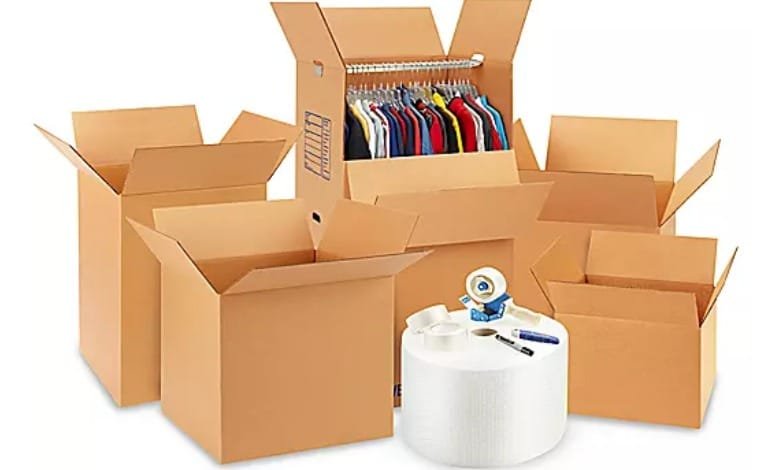
- Learn More >>>>Moving Short Distance
Putting together a comprehensive collection of moving supplies is the first step towards taking control of your relocation. It transforms the overwhelming task of packing into a manageable, step-by-step process. By ensuring you have the right boxes, protective materials, and tools, you are actively safeguarding your belongings and setting yourself up for a far more pleasant unpacking experience.
Of course, the most stress-free option is to let the professionals handle it. Here at Top Town Movers, we not only offer expert moving services throughout North York and Ontario, but we can also provide all the high-quality packing materials you need, or even take care of the entire packing process for you. Whatever you decide, this packing materials list will serve as your trusted guide, ensuring you are fully equipped for the journey ahead. A successful move starts long before the truck arrives—it starts with the right supplies.

